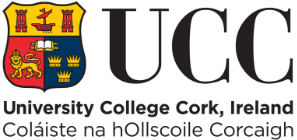The 12th biennal collective intentionality conference — july 13–25, 2020
Varieties of Collectives Types, Value Ranks and Social Unity – Issues of Qualitative Social Ontology
Are there different types of collectives, according to the different kinds of values they are oriented toward? Can certain values unify people and bind them together, while others divide people and weaken collectives’ social unity? I am convinced that these are crucial issues for social ontology, which, astonishingly enough, are mostly neglected in the contemporary social-ontological debate, while they are taken into account by phenomenological perspectives on social ontology. In order to argue for this, I focus on Gilbert’s account of shared values as values of “plural subjects” created by “joint commitment” (2005, 2013), and on Scheler’s account of different types of “social units” grounded on different ranks of values (1913/27). I claim that Gilbert’s account is too generic and does not allow her to distinguish the varieties of plural subjects we create in the social world: indeed, societies, families, religious communities, rock bands, states, sci-clubs, symphonic orchestras etc. exemplify different types of collectives. On the contrary, I argue, Scheler’s axiology points out that there are qualitatively different types of collectives, and that this depends on the kinds of values that orient them and characterize the modality and degree of their social unity. I focus on Scheler’s taxonomy of different types of “social units”: “masse”, “life-community”, “society” and “collective person”. Scheler’s idea is that the constitution of each type of collective essentially depends on what kinds of value-ranks individuals are oriented toward, and that these different types differ qualitatively from one another because of the modality individuals are connected to each other. Both masse and life-community are characterized by the rank of “vital values” such as psychophysical wellbeing and prosperity of individuals, who live there in identifying the one with the other and being involved in the anonymity of conformism. Differently, society is distinguished by the rank of “values of the sensibly agreeable” such as the values of what is useful and brings about pleasure: there, individuals are the subjects of inter-personal relations in an individualistic way. Finally, the collective person is marked both by the ranks of “values of personhood” such as values of beauty, culture and knowledge, and of “values of the holy”: here individuals are mutually responsible and interdependent in their personal flourishment. I discuss this taxonomy. Then, I address an ontologically qualitative point: only values of personhood and holy, which constitute the highest ranks of values hierarchy, are sharable and unify people together; on the contrary, vital values and values of the sensibly agreeable, which are the lowest values ranks, cannot be shared: they are only divisible and therefore divisive values, because, in order to enjoy them, individuals have to compete with one another. So, the less divisible values are, the more sharable they are; and the other way around: the more divisible values are, the less sharable they are. This means that sharable values are the ones that intensify the social unity of those collectives’ types that are grounded on them.


Discussion
Only ISOS members (with valid fee) can access to the discussion section. Visit ISOS website to subscribe.